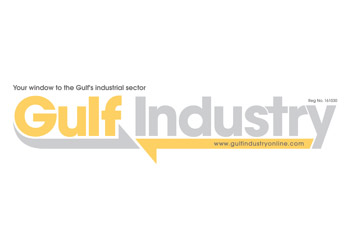
 The company has responded steadily to international demand for fertilisers over the years
The company has responded steadily to international demand for fertilisers over the years
Already one of the world’s largest single-site producers of urea and ammonia, Qatar Fertilisers Company (Qafco) is consolidating that position with plans to build facilities for the fifth phase of its complex.
Qafco-5, which is scheduled for completion in first-quarter 2010, will cost QR2.6 billion ($714 million) and add 1.1 million tonnes each to the ammonia and urea production capacity, thus boosting ammonia capacity to 3.3 million tonnes per year (tpy) and urea capacity to 3.9 million tpy.
The expansion will enable Qafco to maintain its position as the world’s largest single-site producer of urea.
A pipeline will be laid from Ras Laffan to Mesaieed Industrial Area to supply gas for the phase.
Snamprogetti was tipped to be awarded the contract to build the fertiliser plants. The project could be awarded jointly with South Korea’s Hyundai Engineering and Construction Company. “We are only negotiating with Snamprogetti for the time being and they are going to be entering into a venture with Hyundai,” Khalifa Abdulla Al Sowaidi, managing director of Qafco said recently.
“We will be the largest urea and ammonia producer in the world,” he said.
Production of fertiliser, made from the chemical compound urea, accounted for about 43 per cent of the sales of Industries Qatar, the main shareholder (75 per cent) of Qafco. Yara International holds the remainder 25 per cent of Qafco’s shareholding.
Since being founded in 2004, Qafco has responded steadily to international demand for fertilisers, developing and expanding its facilities over the years to reach a current production capacity of 3 million tpy of urea and 2.2 million tpy of ammonia
In its most recent diversification, Qafco is implementing a melamine project, an agreement for which was signed in July 2006 between Qafco and Qatar Intermediate Industries Holding Company. Qatar Melamine Company, fruit of the joint venture, will produce 60,000 tpy of melamine. One of the largest plants in the world, it is expected to add extra value for the urea produced by Qafco and boost Qafco’s profitability.
The plant will be located in Mesaieed within the Qafco complex. The melamine plant will be integrated with Qafco’s various units and production facilities.
Melamine is used in laminates, wood adhesives, surface coatings, textile treatment and moulding compounds.
Following the signing of the agreement between Qafco and Qatar Intermediate, a contract for the project’s engineering and procurement was signed between Qafco and the Italian firm Eurotecnica. A second engineering and procurement contract was signed between Qafco and Urea Casale of Switzerland for the Urea-1 revamp and melamine integration.
Under another agreement, Qafco will handle both the administrative and operational aspects of Qatar Melamine Company.
Construction work for the project has commenced.
Earlier, in 2004, the company commenced production of urea formaldehyde, a non-caking agent vital to urea production.
The company reported strong results for 2006. Net profits were QR1.81 billion against QR1.78 billion in 2005.
Production of ammonia was 2.17 million tonnes (against 2.13 million tonnes in 2005) with exports standing at 551,828,000 tonnes. Most of the ammonia was consumed in-house as feedstock for urea production while some was supplied to Qatar Fuel Additives Company.
Production of urea was 2.9 million tonnes with exports at 2.9 million. Exports were 2.97 million tonnes, indicating there were stocks on hold other than production.
The main urea markets were Australia (14 per cent), USA (13 per cent), Thailand (12 per cent), India (11 per cent), South Africa (9 per cent), Philippines and Korea (6 per cent) each, Japan (4 per cent) and Sri Lanka (3 per cent).
In ammonia, India takes the major share of 63 per cent, followed by Jordan (29 per cent). Remaining shipments go to the US, Australia and Korea.








